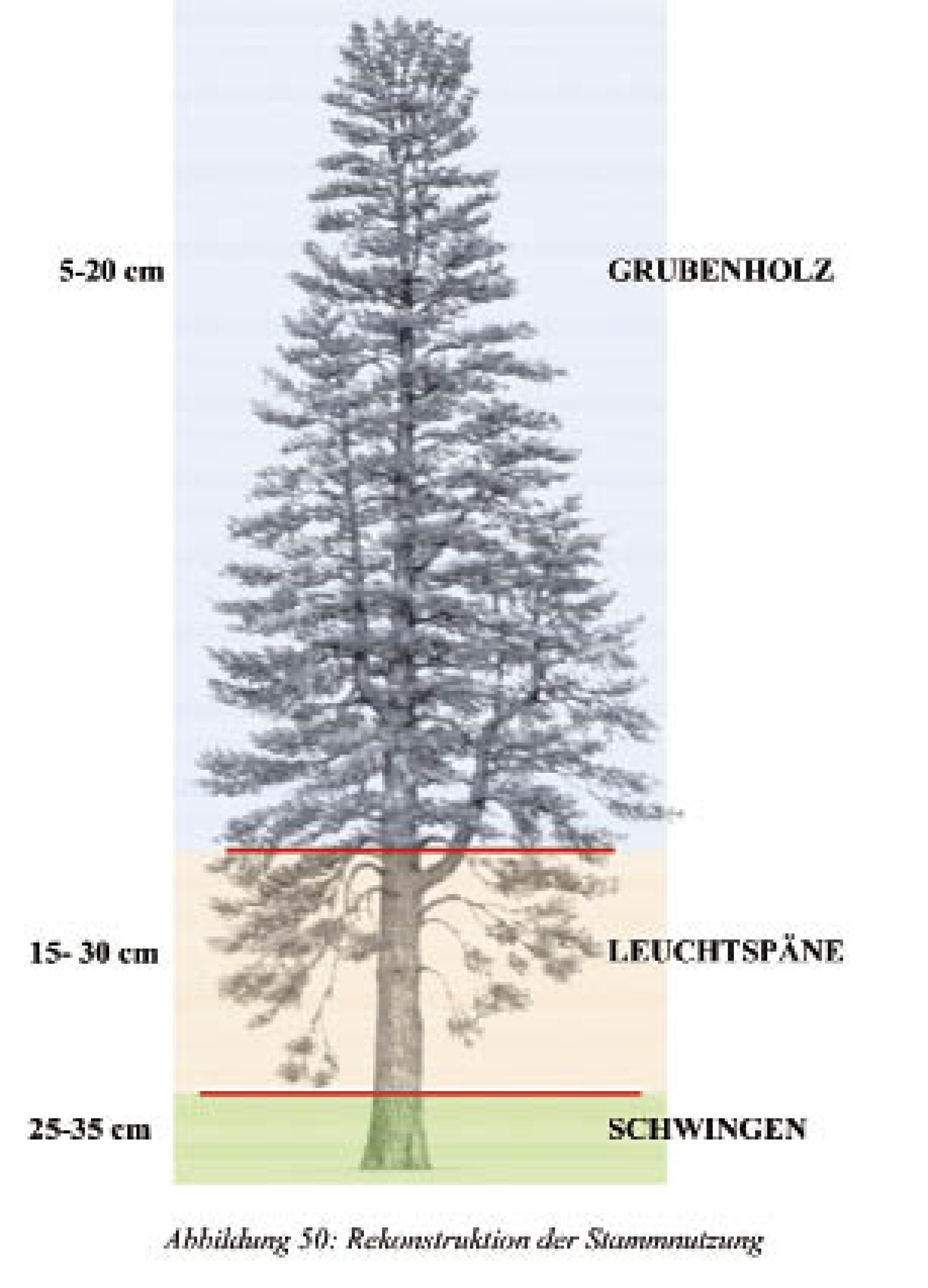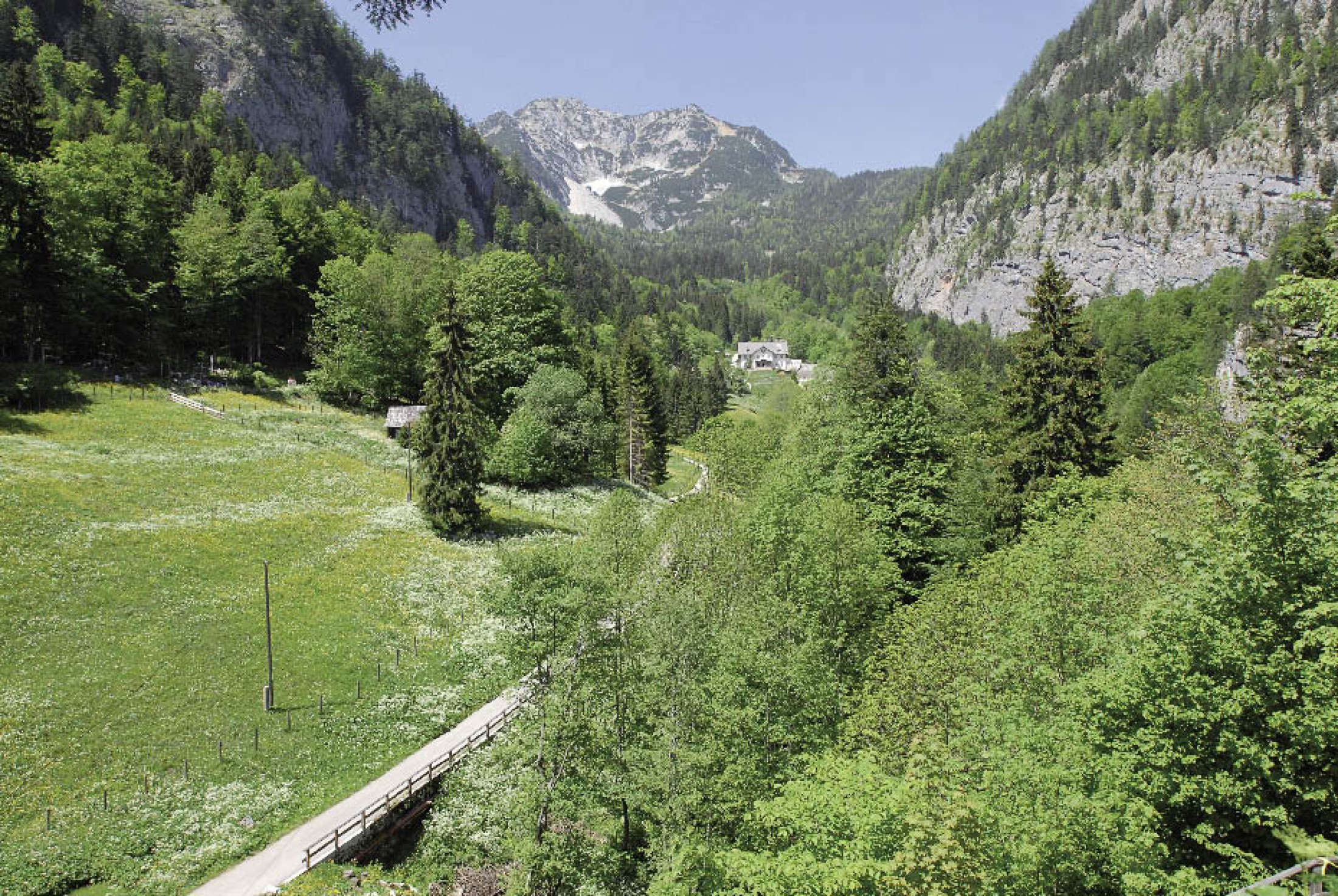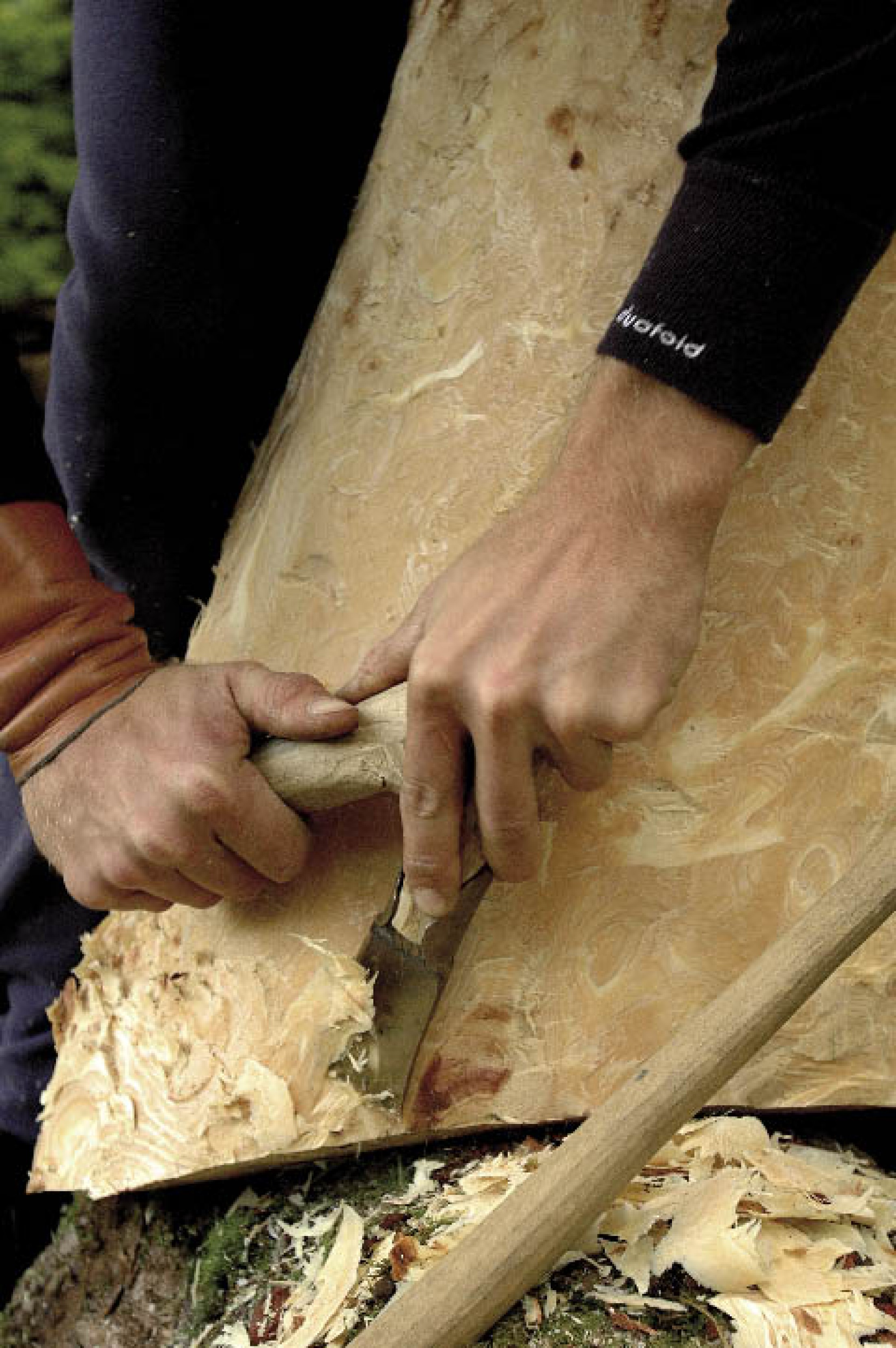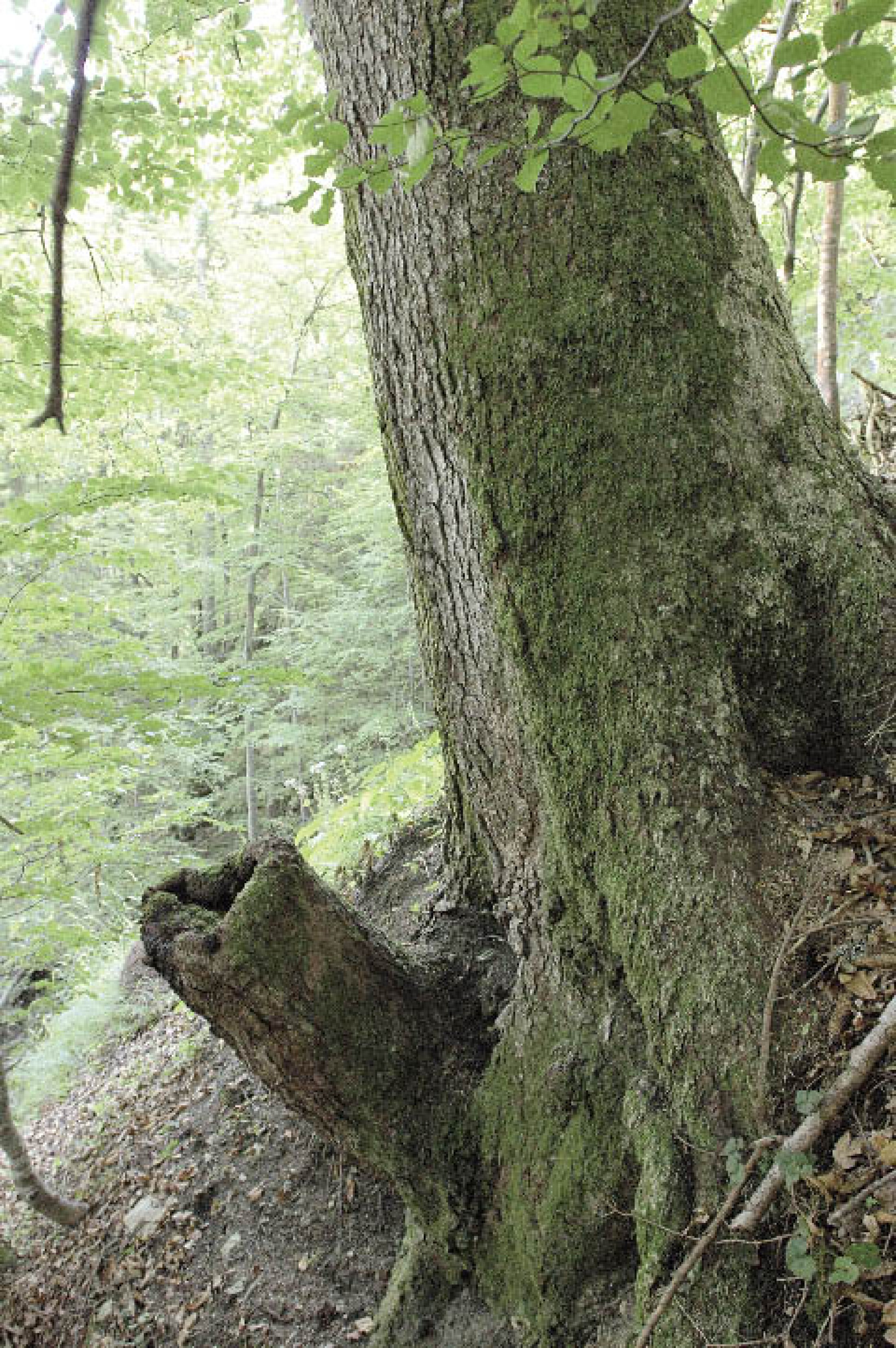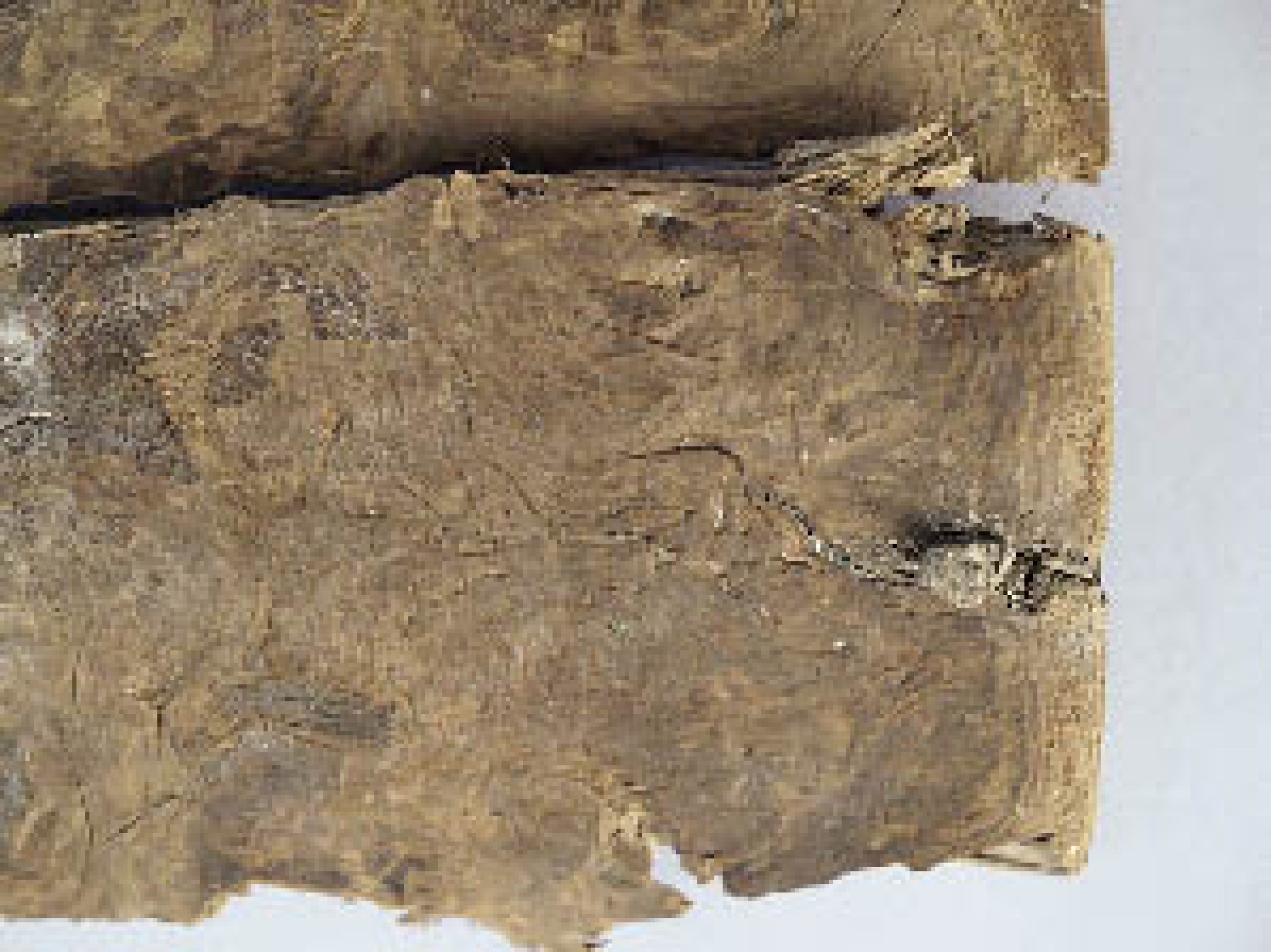Prehistoric forestry
Only a limited amount of space was available for forestry in the Salzbergtal valley, so from the Bronze Age onwards it was important to use the wood resources in a sustainable way. This sustainable forest management can be seen in the many finds of prehistoric wood made in the area.The limited wood production area in the Salzbergtal valley
Parts of trees used to make wood chips
Particularly hard wood was used to make Fülltröge
How trees heal their wounds
Bronze Age forestry
The limited wood production area in the Salzbergtal valley
The potential log supply area around the mine was limited by various steep slopes and by the natural timber line. The mining wood would most certainly not have been delivered uphill, so they must have come from this area, which suggests the existence of sustainable forest management in the Bronze Age. The many wood finds made from fir make it possible to paint quite an accurate picture of prehistoric forestry in the region.Parts of trees used to make wood chips
The Bronze Age mining timber has a diameter of 5 to 25 cm, with a mean value of 10 cm. From the bending of the growth rings on the tapers, it is possible to determine the diameter of the part of the trunk from which they were split off. We could show that the tree parts used in the production of tapers had a diameter of 20 to 40 cm, with a mean value of 29 cm. These parts of the trunks were bigger than those used to produce the mining logs. The tapers were approximately one metre long and could only be obtained from high quality wood free from knots. This quality is only found in the lower, outer part of the tree trunk, e.g. below the bark, because the tree has cast its branches in this area.Particularly hard wood was used to make Fülltröge
The salt trugs (filling trugs) were mostly made from overgrown fir stumps. The structure of such callous tissue is different from normal wood, with cells arranged in a spiral pattern. As a consequence of this spiral structure, the wood is very difficult to split or break, and these are precisely the properties the miners sought. The diameter of such calloused stump sections, used for salt trugs is slightly larger than the diameter of the parts of the trees used for the tapers, with a mean value of 39 cm. Since the stump is situated lower down it must of course be bigger.How trees heal their wounds
How do trees heal their wounds? In the limestone Alps, there is only a very thin layer of top soil on the base rock, meaning that there is not much space for tree roots. This is why several types of trees, firs in particular, grow in close contact with one another, exchanging sap as well as the products of photosynthesis as they grow together. If a tree is hurt, it will try to close the wound, very much like human skin. This process can be easily observed where branches are sawn-off. If a tree whose roots are in contact with other trees is felled, it will start to heal it’s stump, as it continues to be nourished by ist fellow trees.Bronze Age forestry
To deliberately produce the formation of callous tissue, felling must be limited to single trees, an approach that would correspond to today’s single tree selection. It was possible to show for fir that the entire tree trunk was used, from the calloused stump to the tree top. These findings suggest that the Bronze Age miners operated an excellent, sustainable forest management system. There are still many open questions in connection with the wood utilization at this time, for example relating to the transport of the logs or the exploitation of the withies used until quite recently in the constructions of wooden fences and palings. Accurate analyses will most certainly provide answers to some of them, but we will probably have to accept the fact that much knowledge on the wood utilization has been irrevocably lost.(Grabner, M.)

